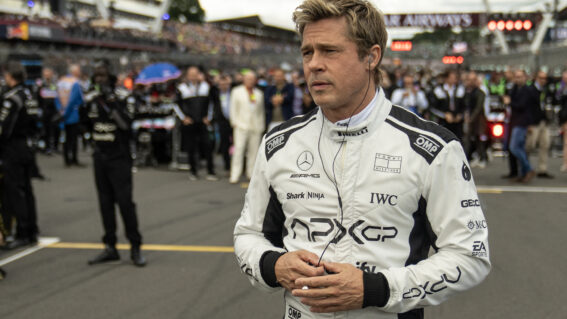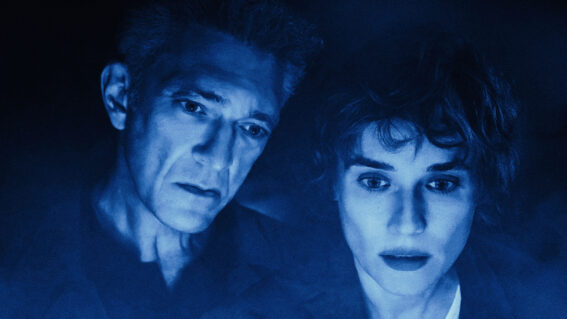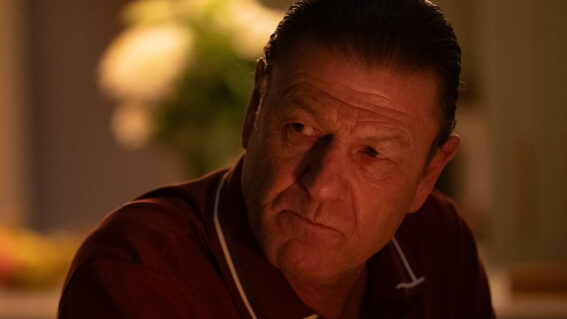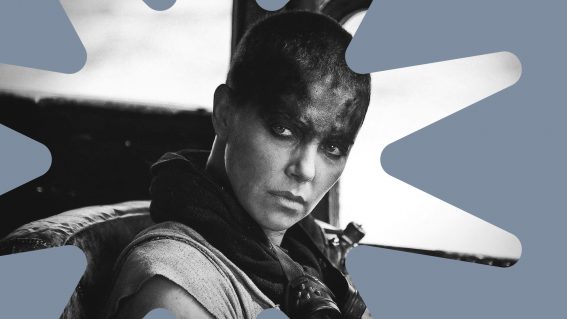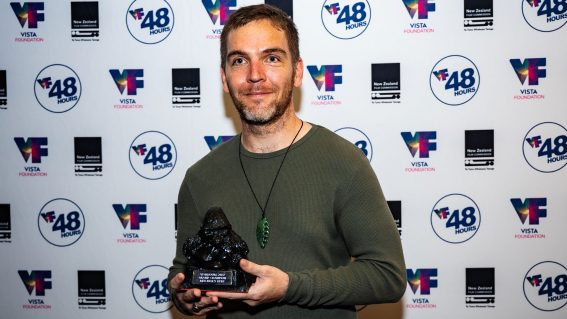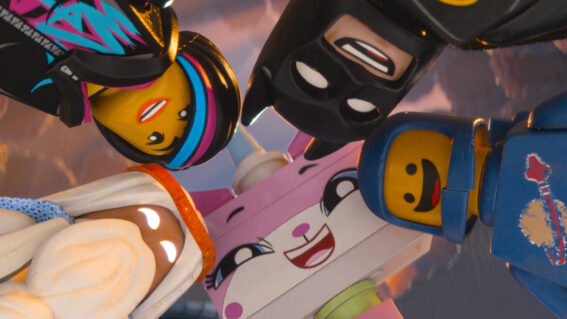Retrospective: 10 years on, Dredd remains an essential take on Britain’s greatest comics character
Karl Urban wisely kept his mask on for the entirety of this underperforming, hardcore cult classic.
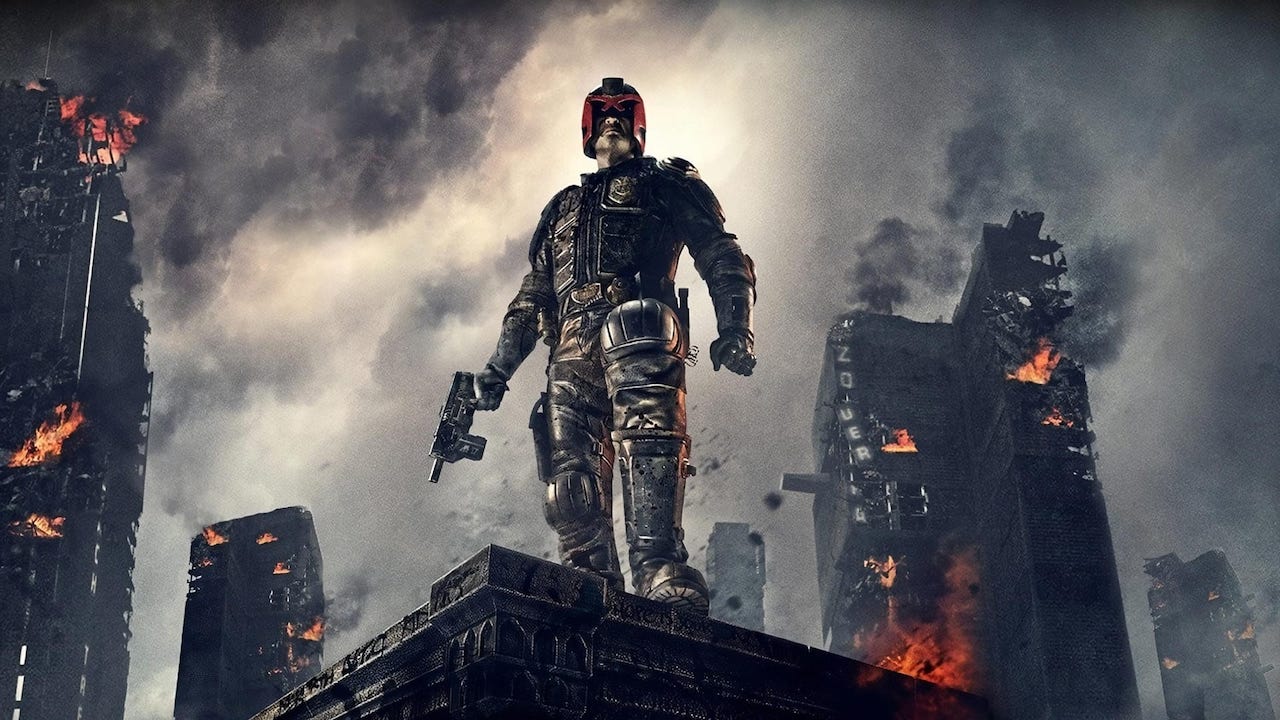
Looking back at the comic book roots and failed 1995 screen debut of the UK’s most mercenary sci-fi lawman, Travis Johnson sees the 2012 commercial flop Dredd as a cult action classic.
Judge Dredd, the 1995 big screen debut of Britain’s most celebrated comic strip, doesn’t suck because the titular character, played by Sylvester Stallone, takes his helmet off, but it’s an easy peg to hang criticism from. After all, on the page Dredd, a grim lawman policing the streets of a vast, dystopian metropolis that encompasses the entire Eastern Seaboard of North America, never unmasks—he’s faceless authority personified.
When it came time to take a second crack at a Judge Dredd movie, one thing was certain: the lead character would remain faceless. Played by Karl Urban, the Dredd of Dredd is all jutting jaw, terse pronouncements, and sudden violence. Directed by Pete Travis (Vantage Point) from a script by Alex Garland (Ex Machina, Men), Dredd isn’t exactingly faithful to the source material, but this choice sent a message to fans disappointed with the previous effort: attention was being paid to the important elements.
A Day(stick) in the Life
In terms of plot, Dredd could scarcely be simpler: investigating a death in a massive block tower, Judge Dredd and his rookie, the psychic Judge Anderson (Olivia Thirlby) find themselves up against the gang lord Ma-Ma (Lena Headey, enjoying herself) who controls the city-sized building. She’s at the top of the building, they’re at the bottom, her army of mooks are between them.
The stakes and the goals are clear—the only thing left to do is shoot our way to catharsis. Similarities to Gareth Evans’ The Raid, which was released around the same time, have been noted, but appear coincidental; the basic plot is just a functional and obvious framework if your aim is to stack the running time with action, as both films do. Dredd also faced the bigger challenge of distilling the world of Judge Dredd into a lean, 95-minute action film.
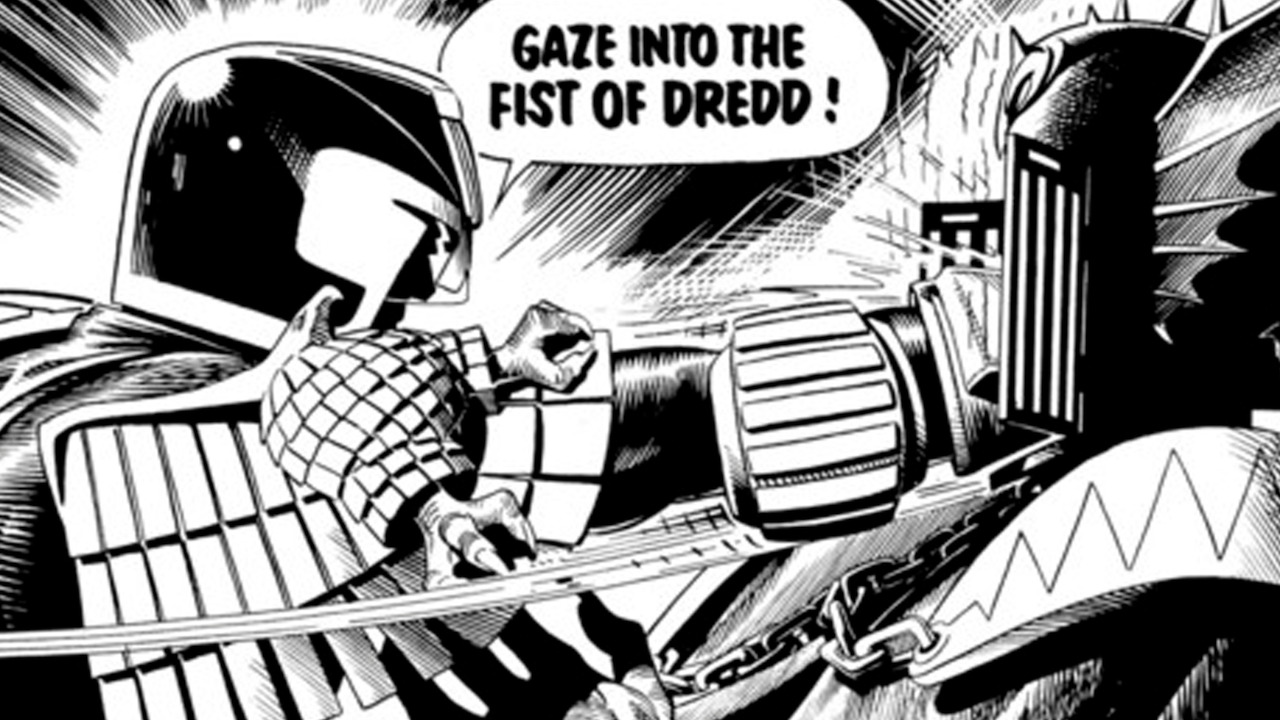
The Galaxy’s Greatest Comic
Judge Dredd debuted in issue (or “prog” in the book’s parlance) #2 of the weekly sci-fi anthology 2000 A.D. in 1977. Created by writer John Wagner and artist Carlos Ezquerra, the strip drew from cinema right out of the gate, mashing together Dirty Harry’s authoritarian cop with the bizarre, satirical near future of Death Race 2000 to produce the ongoing story of a fascist police state trying to keep a lid on a teeming city of 800 million—one of the last bastions of civilisation in the strip’s post-nuclear setting.
Our “hero” is the toughest of the tough, an implacable street cop who has no personal life, no friends, no family, no mercy – only an undying devotion to The Law. He’s the final evolutionary state of the maverick cop archetype, only he’s no longer a maverick because his lethal take on justice is now state policy.
Yet while Dredd himself is fascist, the comic is markedly more anarchic, frequently satirising the issues of the day and delving deep into the implications of its fascist future society. It also pushed off into a lot of strange directions, arguably a result of the creative demands of producing a weekly sci-fi story. The world of Judge Dredd was not planned; it accreted. Thus, the comics include extra-terrestrials, mutants, robots, space travel, time travel, alternate dimensions, and the odd alien superfiend—all of which were jettisoned for the 2012 movie, leaving only the core concept.
Sadly, also ditched was any sense of irony or satire: Dredd plays Dredd straight, and while that’s fine for a one-off actioner, it does rob the original text of its singular charms.
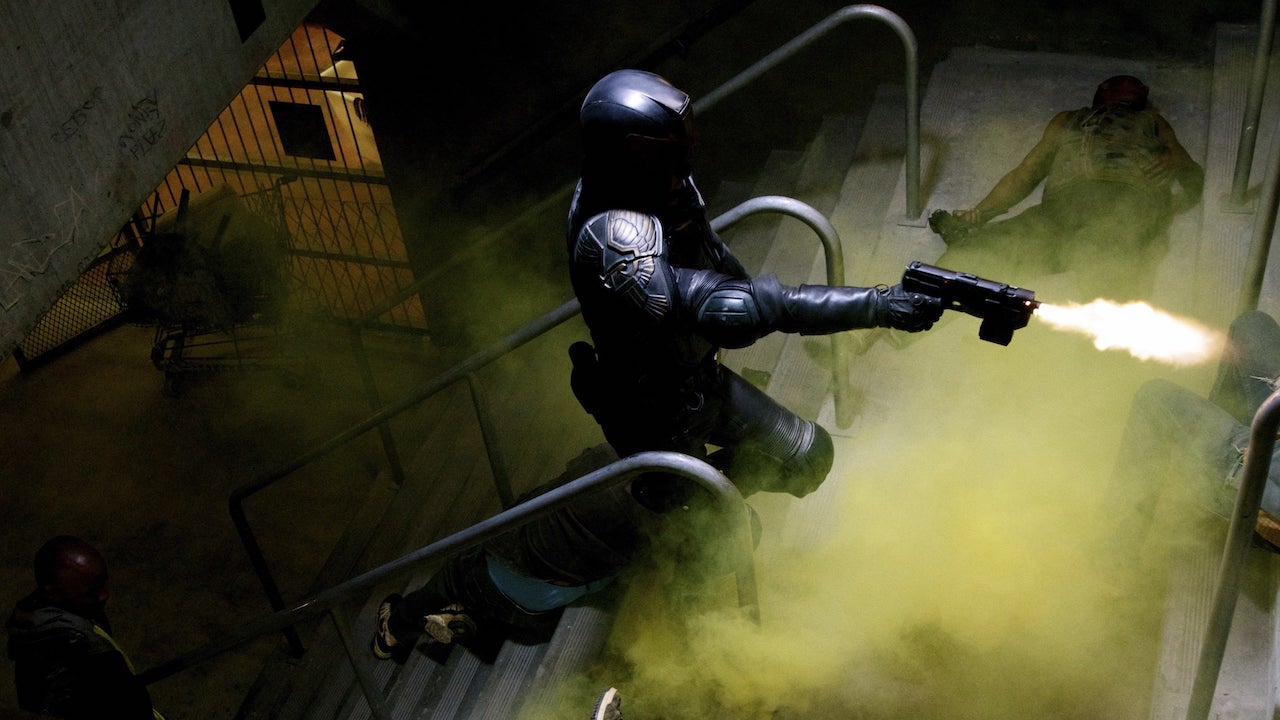
Thrill-Power Overload
But what we’re left with is a great sci-fi action film, one that hints at a broader, weirder world while maintaining a tight focus on the matter at hand. Urban is fantastic in the title role, fully committed to embodying the strip’s dour, deadly hero. He’s ably abetted by Thirlby’s nascent Judge Anderson, whose wide-eyed sensitivity is brutally quashed by the events of the film, and Headey’s gleefully sadistic, nihilistic Ma-Ma.
The film also looks the business, with its Capetown and Johannesburg shooting locations lending it a different flavour than previous urban dystopias. It looked even better in 3D, being one of the rare movies to take full advantage of the format back when it was all the rage. One of the cooler concepts we encounter is a drug called Slo-Mo, which radically slows the user’s perception of time. This is rendered in slow motion and 3D, the result being a strangely beautiful aesthetic even if we’re seeing a bullet punch through someone’s cheek or some unfortunate plummet 200 storeys to their messy demise (like its source, Dredd revels in OTT violence).
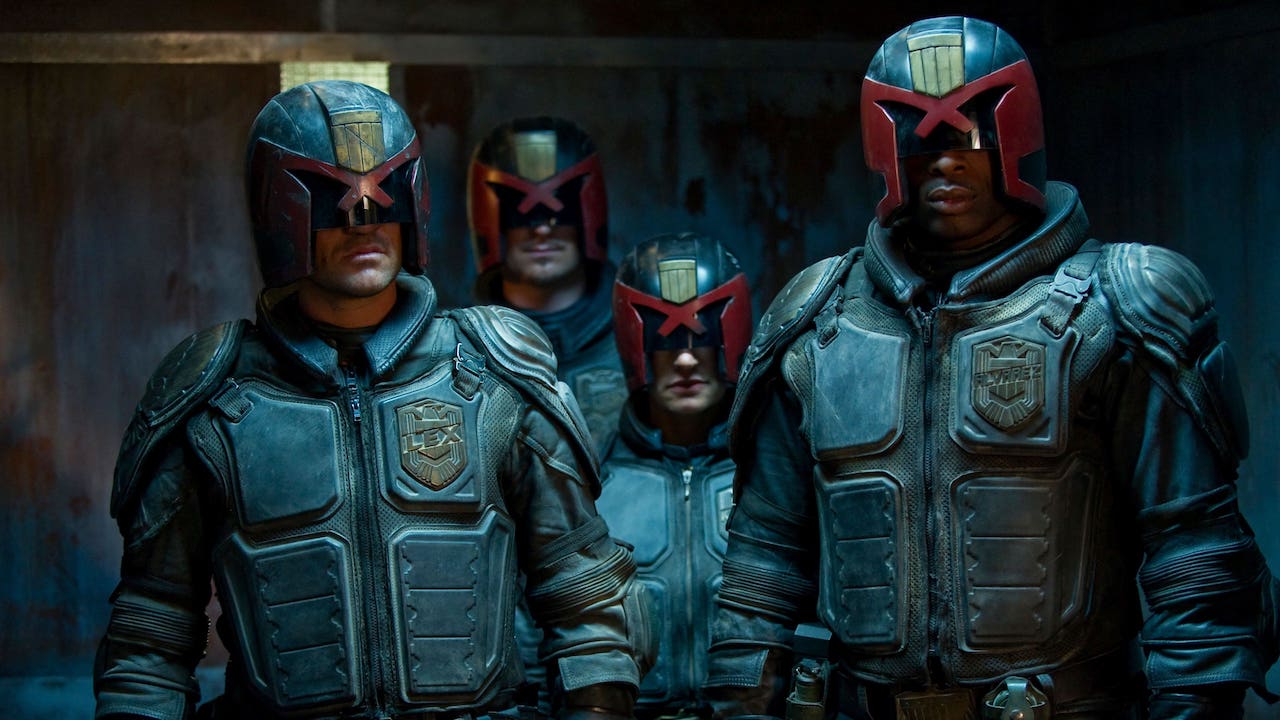
The Grim Future
Which is what fans wanted. Critics seemed pretty chuffed too, with Dredd sitting at a Certified Fresh 79% on Rotten Tomatoes (to be fair, some complained about the violence, which is like moaning about songs in a musical).
Unfortunately, the wider world did not respond—Dredd failed to recoup its modest $45 million dollar budget, and a mooted sequel has yet to appear. Neither has a proposed TV series spin-off, although Karl Urban has avowed his willingness to reprise the role (he is currently starring in The Boys, which was created by former Judge Dredd scribe Garth Ennis). Still, even as odds of a continuation dwindle and other 2000 A.D. adaptations, like Moon director Duncan Jones’ Rogue Trooper seem to have died on the vine, Dredd remains a hardcore cult classic.











